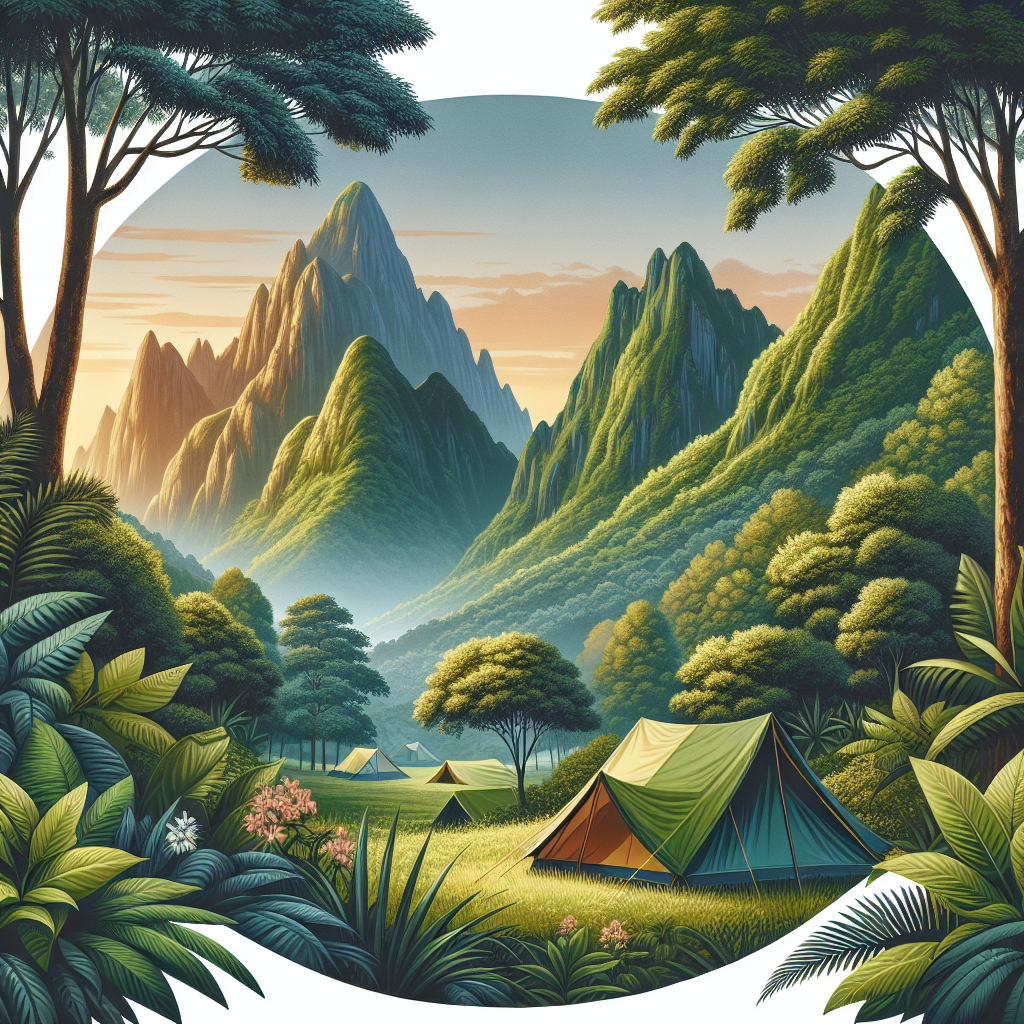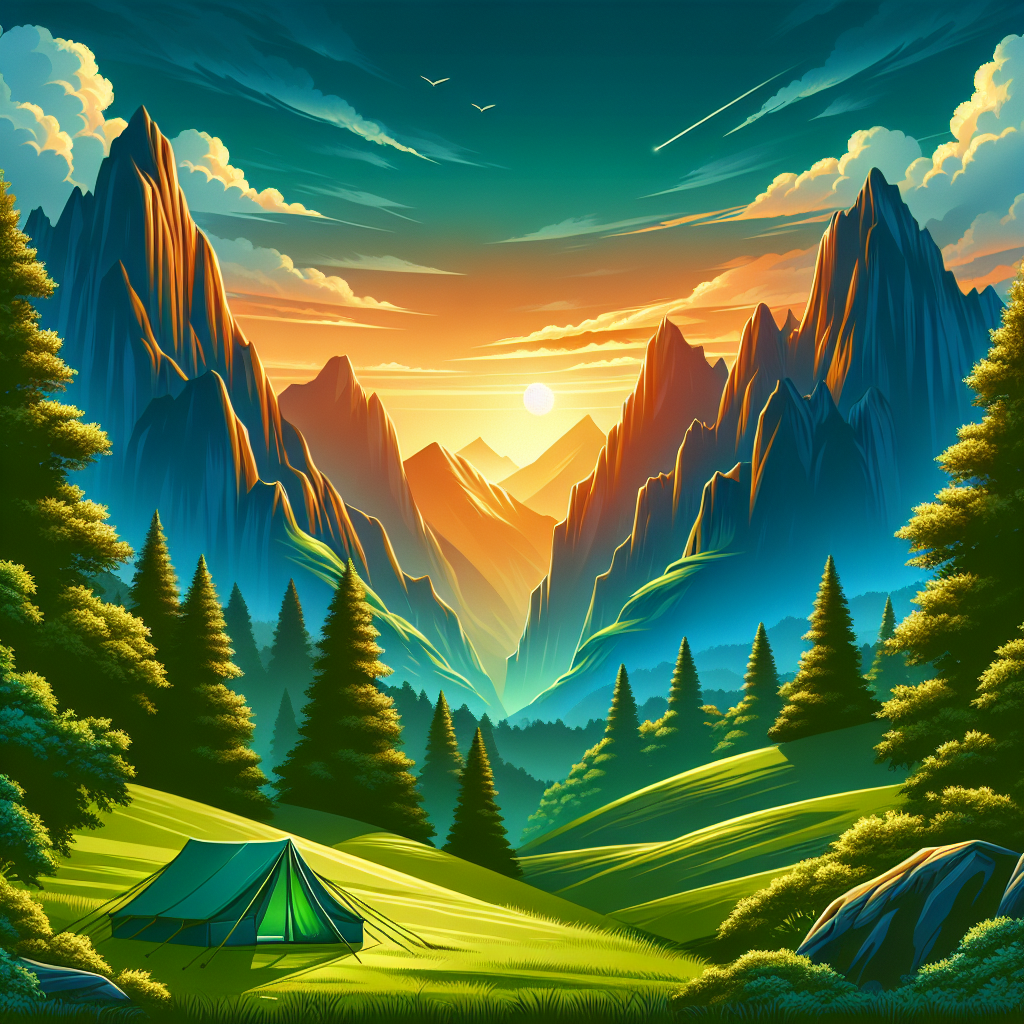Taking a camping trip to a National Park might be on your dream list. What could be better than immersing yourself in nature, sleeping under the stars, and waking up to the sound of birds singing outside your tent? However, to make sure your adventure is as enjoyable as possible, it’s essential to know and follow the rules and guidelines relating to camping in these parks. This article will provide you with all the information you need about “Camping in National Parks: Rules and Recommendations”, ensuring your camping holiday is successful, delightful, and respectful of the environment. Let’s guide you to a memorable journey!
Understanding National Park Campsite Reservations
When planning your camping trip to a National Park, the first thing to understand is the reservation process. Here, you’ll learn about the types of reservations and the when and how to make them.
Types of reservations
There are two different types of reservations in National Parks: advanced reservations and first-come, first-served. As the name suggests, advanced reservations allow you to reserve a campsite ahead of time, which can be helpful in busy seasons. Meanwhile, first-come, first-served spots are only available on the day of arrival and are not reservable ahead of time. Depending on the park, you might have either or both options available.
When and how to make reservations
Most parks will allow you to make reservations up to six months in advance, while some require reservations to be made at least seven days before arrival. You can make these reservations online through the National Park’s website or by phone. For first-come, first-served campsites, you would arrive at the campsite as early as possible on the day of your camping trip to secure a spot.
Choosing the Right National Park for Your Camping Trip
Choosing the right National Park for your camping trip is a crucial part of your planning. You’ll need to take into account some factors, like your preferences and what some popular parks have to offer.
Factors to consider
When choosing a National Park, consider your own camping skill level, the activities you want to do, the weather, and distance from your home. Also, each park has its unique attractions – natural beauty, wildlife, and range of activities – choose based on your interests.
Popular national parks for camping
Some popular national parks for camping include Yosemite, Great Smoky Mountains, and Acadia. These parks offer beautiful scenery, diverse wildlife, and a range of outdoor activities. However, popularity can also mean large crowds, so be sure to reserve your campsite early.

Regulations on Camping Equipment in National Parks
National Parks have regulations regarding camping equipment to minimize the impact on the environment. Let’s discuss what’s allowed, what’s not, and the environmental impact.
Allowed equipment
Generally, tents, sleeping bags, cooking gear, and other basic camping equipment are permitted in National Parks. Some parks also allow RVs and campers, but this varies by park.
Prohibited equipment
Most parks prohibit items that could damage the environment or disturb other visitors. These can include items like loud generators, fireworks, firearms, and chainsaws.
Environmental impact of camping equipment
It’s important to be mindful of the environmental impact of your camping gear. Non-reusable items and plastic waste can harm the park’s ecosystem. Always remove all trash and dispose of it properly at designated areas.
Campsite Rules and Regulations
Knowing and following the rules is a critical part of camping in National Parks. Let’s talk about park-specific and general camping rules, as well as how these rules are enforced.
Park-specific rules
Each National Park may have its own rules, so it’s important to review these ahead of your trip. These may involve where you can set up camp, quiet hours, fire regulations, or fishing regulations, for instance.
General camping rules
Some general rules apply to all National Park campsites. For instance, don’t leave food out, as it can attract wildlife; dispose of all trash in designated containers; and respect quiet hours.
How regulations are enforced
Park rangers are responsible for enforcing campsite rules and regulations. If rules are broken, they can issue warnings or citations, or even remove campers from the park in serious cases.

Fees and Permits for Camping in National Parks
Camping in National Parks typically requires fees and permits. Here, we’ll discuss the cost, the required permits, and how to acquire them.
Cost of camping
The cost for camping in National Parks varies, but most charge a nightly fee for campsites that can range from $10 to $30 per night. Remember, this does not include the park entrance fee.
Types of permits required
Depending on the park and your activities, you may need specific permits. This could include a general camping permit, a backcountry permit for wilderness camping, or a fishing permit.
Procedure to acquire permits
You can obtain permits online through the National Park’s reservation system, at the park’s visitor center, or at designated permit stations in the park.
Responsible Camping Practices in National Parks
Responsible camping helps protect the parks and their natural beauty. Let’s discuss campsite cleanliness, managing food and waste, and respecting wildlife and plant life.
Campsite cleanliness
Keep your campsite clean and free of trash. This not only ensures the next camper finds a clean site, but it also prevents wildlife from being attracted to human food and trash.
Managing food and waste
Store your food in a bear-proof container, and never feed wildlife. As for waste, pack out all trash, and if there are no restroom facilities, know how to dispose of human waste properly.
Respecting wildlife and plant life
Remember, you’re a guest in the park. Keep a safe distance from wildlife and do not disturb them or their habitat. Avoid damaging plants by staying on designated trails and camping in designated areas.
Safety Considerations for National Park Camping
Camping in National Parks is fun but remember to prioritize safety. Let’s talk about protection from wildlife, weather-related safety, and campfire safety.
Protection from wildlife
Never approach or feed wildlife. Not only is this dangerous, but it’s also illegal in many parks. Store your food properly to avoid attracting animals to your campsite.
Weather-related safety
Check the weather forecast before you leave and prepare accordingly. Extreme weather conditions could make hiking treacherous or even cause flash floods.
Campfire safety
Follow the park’s rules for campfires. Never leave a fire unattended and be sure to put it out completely before leaving or going to sleep.
Hiking and Other Activities in National Parks
There’s more to do in National Parks than just camping. Let’s talk about hiking and other activities available in the parks.
Hiking rules and protocols
Always stay on designated trails to avoid damaging delicate ecosystems. Pack out all trash, and remember that you’re sharing the trail with others, so be courteous.
Non-hiking activities in national parks
There’s a variety of other activities available too, such as fishing, bird watching, canoeing, boating, stargazing, and horseback riding, depending on the park.
Tips for enjoying park activities
Plan your activities ahead of time considering the weather and your physical condition. Also, understand any necessary rules, regulations, or permits related to these activities.
Camping with Pets in National Parks
You might want to bring your furry friend along on your camping trip. Here’s what you should know about camping with pets in National Parks.
Regulations for pets
Some parks permit pets on certain trails or within specific campgrounds, but many restrict pets to paved areas only. Pets typically must be on a leash.
Pet-friendly parks
Some parks are more pet-friendly than others, like Shenandoah National Park and Acadia National Park, where pets are allowed on most trails.
Keeping your pet safe
Keep your pets safe from wildlife and environmental hazards by keeping them close to you and on a leash. Also, ensure they have sufficient hydration and protection from the elements.
Seasonal Considerations for National Park Camping
Overlooking seasonal considerations can cause a significant impact on your camping experience. Let’s discuss the best seasons for camping, seasonal limitations, and dealing with severe weather.
Best seasons for camping in various parks
Each park has optimal camping seasons. For example, desert parks are better in the winter because of cooler temperatures, while mountain parks may be best in the summer when snowfall is less likely.
Seasonal camping limitations
Some parks close campgrounds or roads due to weather conditions or for wildlife conservation. Before planning your trip, check the park’s operating seasons.
Dealing with severe weather and emergencies
Have a plan for severe weather, which can include flash floods, snowfall, or wildfires. The Federal Emergency Management Agency provides disaster emergency plan recommendations, including for camping and wilderness survival.

